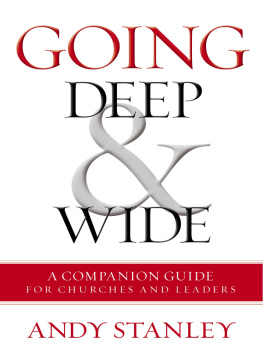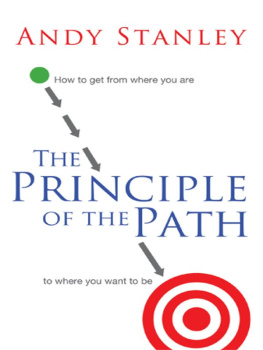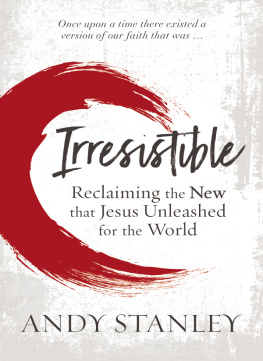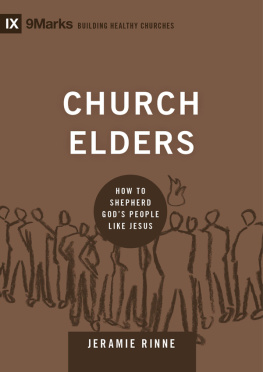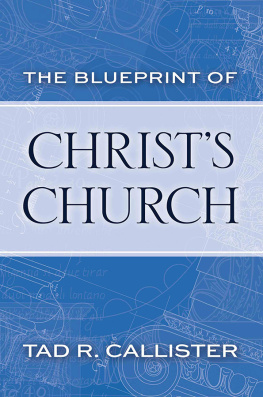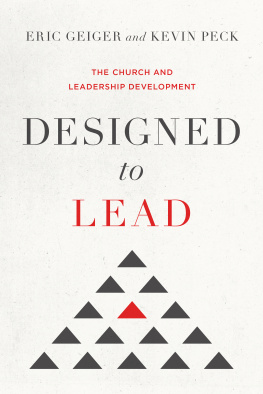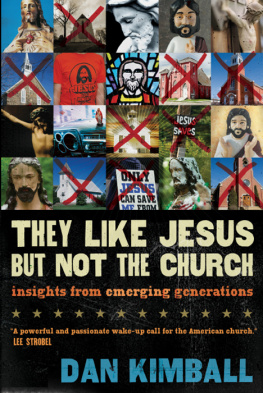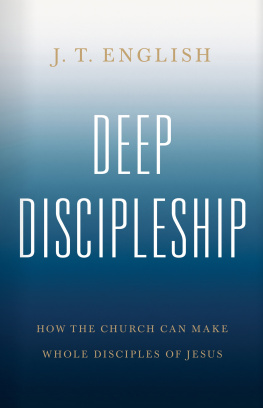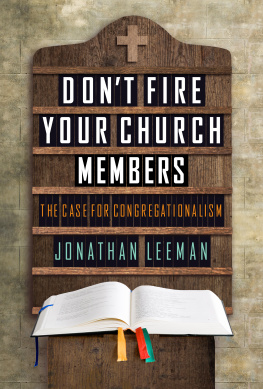In this ebook edition, please use your devices note-taking function to record your thoughts wherever you see the bracketed instructions [Your Notes] or [Your Response Here]. Use your devices highlighting function to record your response whenever you are asked to checkmark, circle, underline, or otherwise indicate your answer(s).
Y our churchs mission, whether expressed in writing or not, is probably not much different from ours at North Point:
To lead people into a growing relationship with Jesus Christ
by creating irresistible churches
where people are encouraged and equipped
to pursue intimacy with God,
community with insiders,
and influence with outsiders
Im guessing those same aims are equally meaningful to you and pretty close to your heart.
Since writing Deep and Wide, Ive heard from pastors all over the country who are rethinking how they do church. One of the questions Im often asked is: How do you become a church that not only helps its members pursue an intimate relationship with God but is also irresistible to those outside the church?
If your church is better at the first than the second, youre far from alone. Most churches naturally drift to serving the needs of their insiders. The gravitational pull is toward going deep, not wideto focus on discipleship programs and spiritual growth for current church members. The people who are always there and who constantly express their needs and wants. You know: The squeaky wheel gets the grease.
But that needs to be balanced by leadership that emphasizes how to go wide. We want our churches to be places unchurched people love to attend, places that are welcoming, engaging, helpingirresistible. Which brings us face-to-face with a challenge: how to develop in ourselves and in our churches an intentional awareness of outsiders.
In Deep and Wide, I share in detail North Points model for going deep. As a brief refresher, early on at North Point, we agreed we were way more inspired by the people who have the kind of faith that endures a no from God than those who claim their faith arm-twisted a yes out of him. Big faith is a sign of big maturity. We concluded that the best discipleship or spiritual formation model would be one designed around growing peoples faith. Conversely, the model most of us had grown up with was designed around increasing peoples knowledge. The models we were exposed to were primarily teaching models. We wanted to go beyond that.
But how?
After a long process, we identified five dynamics that had played a role in the spiritual formation stories we heard time and time again. It was a defining moment for our team. If these dynamics were the essential ingredients in how God grew peoples faith, we decided we should build our entire ministry model around them. So thats exactly what we did. While I unpack the five dynamics in detail in Deep and Wide and in a small group resource called Five Things God Uses to Grow Your Faith, Ill list them here before we move on:
The Five Faith Catalysts:
Practical Teaching
Private Disciplines
Personal Ministry
Providential Relationships
Pivotal Circumstances
Weve developed some great resources to help churches go deeper in discipleship for their insiders (see Appendix A for a sample). You might be aware of some of them or you may have borrowed discipleship activities and programs from elsewhere or even developed your own. This companion guide is not about turning from any of that. In fact, I encourage you to keep thinking how to further refine those programs and activities while you move forward through this guide.
Our emphasis, however, will be on the problem most of us face: how to create a church where the unchurched will want to comean irresistible church where people demonstrate irresistible love and faith.
What does that kind of church look like? I spent Section Four of Deep and Wide on what it means to be a wide church. That content is a primer for what well be exploring here. But our focus on this journey is a question we started asking ourselves at North Point: How do we know? How do we know were really reaching those we hope to reach? What practical things must we consider in order to gauge how well were connecting with unbelievers? And yes, Ill share what we learned in that process.
This guides structure is simple. First well dig deeper into the why. Why even do this? Why upset the status quo by trying to become a church where the unchurched feel welcome? Thats bound to shake things up around here; is it worth it? We will discover that its worth everything.
In session two, well flesh out a sharper understanding of exactly who those unchurched people in your community are. Ill also introduce you to something I call the Irresist List: three questions we all need to carefully think about in order to gauge our appeal to the unchurched.
The final three sessions will then zoom in on each of the Irresist List questions. Well break each one down in detail to discover how to make our churches more attractive to outsiders.
All five sessions will include Your Turn sections to help your churchs leadership team dive in and think hard about understanding and applying what youre reading. Lets start with one of those right now.
Y OUR T URN
1. Look again at the mission statement at the start of this introduction. How closely does it reflect your churchs mission? How strongly do you personally support your churchs mission?
[Your Response Here]

